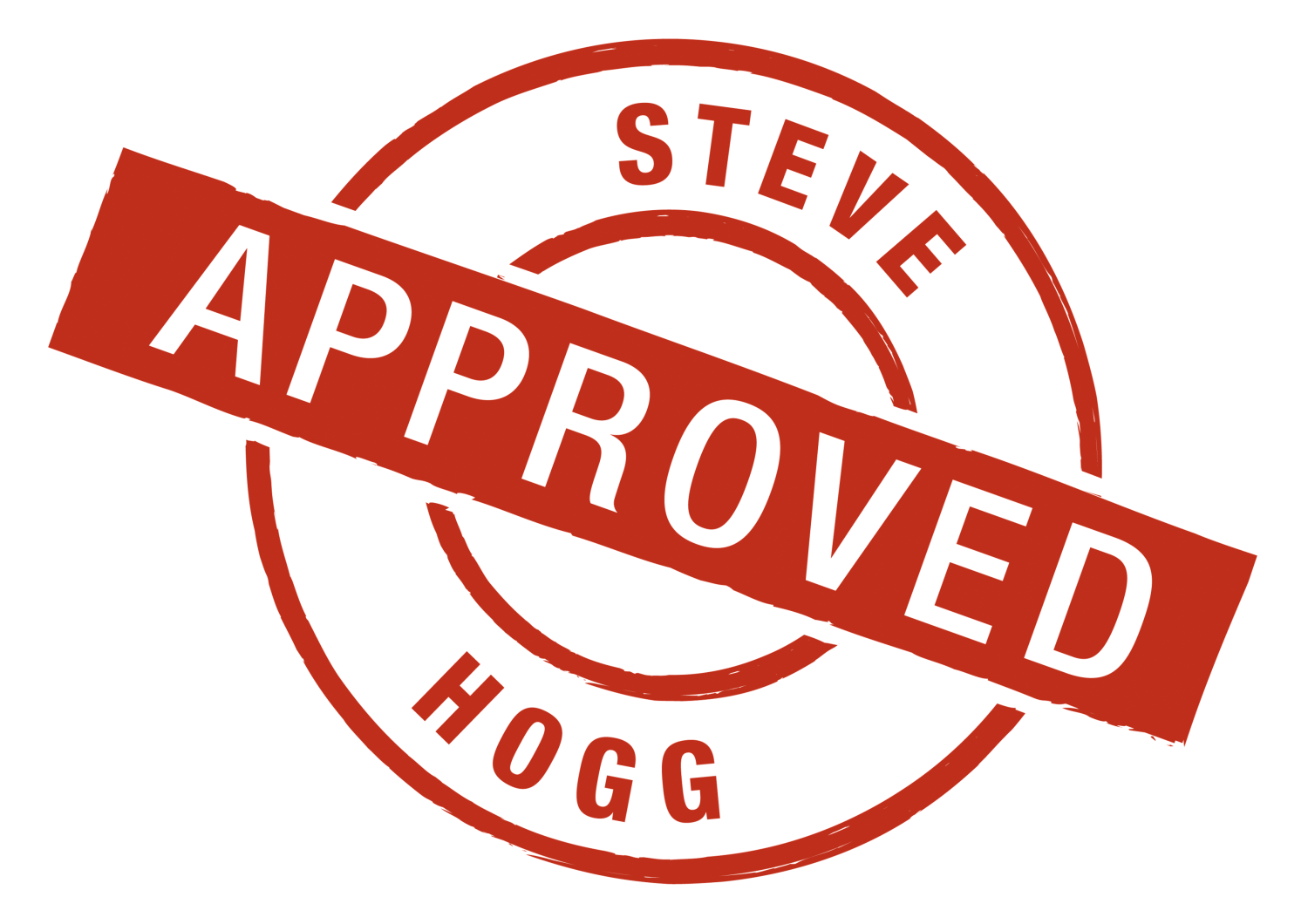Last Updated on April 28, 2015 by stevehoggbikefitting.com
The following is a question, and the comments that followed, submitted to Steve via the Prime Q&A with Steve’s responses in bold. Join Prime today for more great questions!
G’day Steve,
I hope you’re well and not sweltering away there in the summer heat. We’re just getting by with snow and -5 conditions. It’s great fun.
I have a gent coming back in a week or so, I know him through work and his posture has always been something when i’ve seen him that’s stood out to me. I never really gave it too much thought until he contacted me and asked me about a fit. He then proceeded to send me a picture of the new bike, a second hand Felt AR4 with no spacers under the stem. I thought about him in my head and looked at the bike and began to think the two wouldn’t go.
He was in a Coma when he was seven years of age with meningoencephalitis and this caused the ligaments behind the knee to shorten and subsequently, due to having no real support or physio at the time, now his knees don’t lock out at all. After i had a good look at him, it’s clear the knock on from this is an anteriorly rotated pelvis, lumbar lordosis and thoracic kyphosis. Now add on top of that he’s the least flexible/functional person i’ve came across, potentially has a jammed up left SIJ and has a large upper torso through lifting weights to match his thin legs, he’s a mixed bag and was in no way fitting the Felt. I advised him of this and I worked through the off the bike part of the fit and set up his shoes and insoles. I had a look at him on the bike as well, sorted his cleat position and advised on an alternative solution in the geometry of the Domane of which he now owns as well as having managed to get rid of the felt.
I knew i was limited by the bike but I got him on it anyway and got him to an initial height and setback that was looking good for him, certainly as a starting point for fitting to a new bike, however he would quickly progress to severely toe dip on the right hand side then stop pedalling as he was feeling pain in the lower right hand side of his back. He wasn’t even approaching a moderate intensity. It’s really got me scratching my head. I’m hoping we can start on the Domane with his bars level and potentially move up or down from there as i see fit, hopefully this will go some way to alleviate the problem but i can’t help think this right foot, toe dipping scenario is going to recur no matter what.
I have 20mm pedal spacers which i have also used to increase foot separation (still not enough) and I’ve advised he visit a health professional and really get into some stretching/Yoga in the meantime. Is this something you’ve came across that you can advise on? He’s really keen and followed my advice so far re changing the bike and I would really like to get him going on the new one. Do you think that the left SIJ could be affecting the right hand side to such a degree he is toe dipping like that? He doesn’t have a MLLD. He was dropping his hip to the left. Oh I also fitted a Dynamic to his bike that day, so he was sitting on an SMP -3 degrees. I wouldn’t say flexibility between sides was that much different, poor on both sides would about sum it up.
Cheers.
G’day Garry,
The sad reality is that it takes a certain level of physical function to ride a bike effectively. Sometimes clients cross my path who aren’t at that level. Yesterday I had a client I hadn’t seen for 10 years. He is a medical specialist, works 60 hours a week, mainly seated, doesn’t stretch, races his bike at club level and has a young family. He manages 10 -12 hours a week on the bike but doesn’t stretch. In addition he has a 9 mm shorter right leg which he’s known about for years. He still has the shim under his cleats I placed there 10 years ago but has not compensated for the LLD in his walking shoes (despite my advice 10 years ago to do so). His complaint is chronic left knee pain on the bike.
Like your guy he is a mess. On the bike the right knee brushes to the top tube and the right foot is toe in. The left foot is straight ahead but he sits 10 mm off centre to the left on the seat. He sits squarely on the seat in that neither hip is more forward but he sits with pelvis tilted to the right.
He wore me out. Instant left knee pain on the bike and nothing I did in a positional sense had any impact. In he end I got him off the bike and gently stretched his hips and lower back on both sides for maybe 10 minutes then put him back on the bike. Result, no knee pain………………..for about 10 minutes or so before it reappeared. This cemented in his mind what I had been telling him. That the problem isn’t his bike position, it is the way that he functions. He’s now agreed to train 2 hours less a week and spend that time doing the stretching and stability exercises that I’ve given him. He will continue to ride at low intensity only (knee only hurts when he goes hard) for his psychological well being and I’ve asked him to come back monthly so I can assess his functional progress.
I also fitted a 9 mm heel lift to all of his right walking shoes which he says felt “amazing”; meaning he will now use them daily..
All of this is a long way of explaining that a clever bike fitter cannot solve every problem on the bike. Sometimes the client has to realise that they are the problem. From what you are telling me about your guy, he’s in this category. Less weight lifting and more stability and flexibility training will improve him. Lifting weights without decent global function only strengthens dysfunction. I would have a good heart to heart with your guy and map out a plan.
A couple of things more. The jammed up left SIJ needs to be freed up which will take appropriate stretching and possibly some manipulation. He will never sit squarely on a bike whilst ever one SIJ is immobile and the other is mobile. Is the toe dipping on the right side because he sits down on the left side?
If not, then you will find that he has radically tight right calves.
G’day Steve,
You’re confirming what I suspected.
I’m more than prepared to go beyond the extra mile with people, but mainly if they work with me.
He’s not sitting to the left so much that i can imagine it would cause this degree of toe dipping. He begins to pedal with more or less equal fluency then the right foot just begins to toe dip more and more until it couldn’t be any more exaggerated. Bizarre!
Tight calves is interesting and with his condition I wouldn’t be surprised at all if this was playing a large part in the picture. With the pain coming into his lower right back as well, there’s nothing glaringly obvious as to what’s causing it. Perhaps with that tightness through the calves and the shortened ligaments behind the knee, the site of pain is manifesting itself in the lower back on that side. At the time I was trying to figure what the connection between the right foot and back pain could be. I’ll do what I can and try to assess things further at the time and get back to you with the results.
Cheers Steve.
G’day Garry,
After rereading my previous answer, I think I oversimplified. What I said was correct but sometimes the root cause can be an extremely tight hamstring / psoas / SIJ / Glute max or even quad lumborum on the same side that points the toe. At different times I’ve had clients that nothing worked for in terms of evening out their pedaling technique between sides so I changed them to a midfoot cleat position. That tends to do two things; force the glutes to switch on and to pedal with the same or similar technique on each side.
G’day Steve,
Gotcha! That’s certainly something I can do so I’ll see how things go this time around and then I can run his self help options past him, the professional options and the possibilities of a mid foot cleat position too.
Cheers.
I’d be interested to hear how you get on with him Garry
Hi Steve,
I have been dipping into your blog and Q&As for a while, though more frequently recently, since I have started doing bike fits; so you are probably going to be hearing from me frequently as my list of questions grows.
On the topic of toe dipping, I was wondering if gastrocnemius and soleus muscle length can play a role in dictating pedalling technique or have you found that this has no influence?
For example: If both gastroc and soleus are short can this cause the cyclist to pedal with a toe dipper technique, and when they are returned to normal length, pedalling technique also changes as heel drops more on power phase as greater ankle ROM is acquired. Or is pedalling pattern predominantly neurological?
Cheers
Alexander
G’day Alexander,
Most people who pedal in an excessive toe down fashion have tight gastrocs (I don’t think I’ve ever checked the soleus) and most cases I’ve seen where a rider pedals toe down with one foot and has a more conventional technique with the other foot has tight gastrocs on the toe down side.
Most is not all though. I have seen people without tight gastrocs pedal in toe down fashion as well. For some this is forced upon them by too high a seat height. For others tight glutes, tight QL’s or extraordinarily tight psoas were present and may have been part of the picture. Some of the toe down on one side / normal pedaling on the other side types have a measurably shorter leg on the toe down side.
Sometimes too, a way too far forward cleat position forces the rider to pedal toe down. I strongly suspect that doing so with a far forward cleat position reduces the lever length of the foot and as a result, probably reduces shear forces on the knee. With these types, a more rearward cleat position over time leads to the rider naturally developing an altered, more middle of the road pedaling technique.
So to summarise, there seems to be multiple causes but tight gastrocs plays a part or at least is correlated with most people who pedal like this.Essentially, any factor that prevents a rider reaching the pedals adequately MAY be met with a compensatory response if the form of toe dipping.
Howdy gents,
Just read Garry’s question about the challenging client with functional issues traced back to a coma at the age of 7. This is an enlightening thread for clients and fitters alike. We are not magicians. Everyone needs to read/hear
“it takes a certain level of physical function to ride a bike effectively.”
Your simple sentence hits like a ton of bricks. Some people just cannot sit on a stability ball…end of story. Some people cannot hear the intervals between tones rendering them tone deaf, making the concept of understanding/creating music a monumental challenge. Gary’s client needs some major “onion peeling” to integrate his body in a manner appropriate for crawling, walking, rotating and stabilizing…away from a bicycle before learning to cycle more effectively. This is the type of stuff that everyone needs to read.
Although most clients are not as challenging as Garry’s, many arrive displaying dysfunction on a wide continuum. Reading thread’s like Gary’s can resonate with the problematic types before arriving, which arms them with knowledge and provides us with breathing room when telling these folks that swiping a credit card for a bike fitting session, is only a part of improving his or her riding experiences.
Garry,
Can you grant Steve permission to post your questions/ Steve’s response and my response on the free main portion of Steve’s blog? How about Steve’s FB page?
Hi Jerry,
Sure, why not. I did say to my client I would attempt to seek further advice for his return so I may be better equipped, if you think this can help in any way then definitely.
I must admit he’s been keeping in touch via email asking all sorts of questions. As I said initially, he is very keen so I’ll really work the message home on Thursday when I see him again.
Thanks.
Thanks Garry. Some of the more subtle and simple comments on this website can provide valuable clues to how we move/stabilize, both on and off the bike. Passing this type of information around helps anyone wishing to perform well and those looking to assist them.
Submitted on 2015/02/14 at 12.11 am by Garry as an update
G’day guys,
Our friend returned on Thursday and am glad to say left feeling and I quote “like I’m floating now”.
I had a study of his notes and a good think about things before he arrived. I noted a difference in foot length of 8mm, why wasn’t this on my mind?
A lateral pelvic tilt with the right side of the pelvis being higher by 7-8mm to match a higher left AC joint height. His reactive eye was his left, he was favouring the left (dropping not twisting) he was 15mm in front of pedal spindle (method 2) and so initially i’m thinking if anything the left leg has the potential to be shorter even though it would look like he needed a clog on the right hand side to get anywhere close to even on his pedal stroke.
Plan of action?
Re check cleat position, as it transpired his 1st met on each foot is in the same place relative to his heel and shoe with the 8mm difference in foot length being in front of his first met! The cleat position was fine, re-check pelvic alignment, check for material challenges, his pelvic tilt had returned and we remediated this once again, we used the magnets on his psoas, glutes, calves, Sij (as per pelvic alignment requirements) Spent some time stretching his calves, of which he reckoned his left calve if any was tighter. The interesting thing was that he had been to a podiatrist who had fitted insoles to his walking shoes with a 6mm lift under his right heel. Despite his iliac crests now being level (after remediation) when i placed up to a 9mm shim under his right heel, it never increased his right IC, it would appear he was hiding his MLLD!
We started with a 9mm shim, an SMP, a bike that fitted him better and after a lot of work arrived at a position I was happy with. We got his cleat position further back too, with BOF 20mm in front of pedal spindle, a saddle angle of -2 degrees and he ended up with a 6mm shim under his right foot and pedal spacers to separate his feet further. He was able to ride hard in all hand positions and seemed to be taking great delight in doing so.
I suggested he visit a physiotherapist i know who is a keen cyclist and from there see if he can get some one to one yoga with an instructor who will take the professional information he acquires and listen to his cycling goals then work with him to get him in a structurally better place and functioning better on his bike. He is keen to work with these people and myself to get the most out of this endeavour it would appear, so I’m really happy with the progress so far.
It would seem there were a variety of opposing factors which made this a tricky fit indeed. It’s hard to say what exactly has helped him the most and to be honest I don’t think there is one thing, i think all of the things contributed to the overall outcome, more stability with his cleat position, his leg length corrected, a good saddle with the most suitable saddle height and setback that would make him stable and track well, his reach and drop played a massive part too.
I think all i really done was work with the help i received here and the information he brought back to me to get the fit right from there. If anything it should slam home the message that as fitters we can advise and if clients take that advice and come back with information that aids us, it ultimately helps them even more too. I think when the penny drops people will be much more inclined to carry on in their endeavour of self help and self development and use us as and when we’re required as they themselves develop and need us.
Once again thanks for all your help.
Garry.
Submitted on 2015/02/15 at 4:33 am by Steve in reply to Garry
G’day Garry,
I like happy endings. Fit clients like your guy are invaluable. We all learn more from achieving a positive result with a client with significant issues than we ever do with ‘normal’ people. Well done and best of luck to your client for his future cycling.
That’s great news Garry. Your client is learning that many factors come together and either harmonize or collide when it comes to functioning on a bicycle. The more we learn, the more we realize that there is much more to learn.
Thanks very much guys. “The more we learn, the more we realise that there is much more to learn” I think sums it up nicely.
Cheers!
Note: Often, more specific answers to your questions can be found in the Comments below or in the eBooks section and FAQ page.
To learn more about bike fit products offered by Steve, click here.
Do you have a bike fit success story? Please go here to share.
Thank you for reading, return to the Blog page here or please comment below.





